Are you looking for HubSpot knowledge base alternatives to enhance your customer support and internal knowledge sharing? If yes, you are in the right place.
In this article, we explore some reliable, user-friendly, and cost-effective alternatives to HubSpot that are better suited for internal and external knowledge base management.
Let’s have a quick look at why knowledge bases are essential for businesses in the first place:
- 61% of customers would prefer to use self-service to resolve simple issues.
- 78% of agents and 72% of mobile workers say customers seem more rushed than they used to.
Also:
- Research says 94% of employees feel that having access to the right information directly impacts their productivity and job satisfaction.
- An internal team’s productivity can be improved by 35% with a knowledge base and by streamlining information access.
Both external and internal knowledge bases are crucial for the success of your business, as they serve unique purposes.
While HubSpot is a strong knowledge base platform, there are HubSpot competitors that are more suited to an internal knowledge base purpose. So, let’s get into discussing each of these points in detail to make the most informed choice for your business.
Here we go!
Why HubSpot Is a Great Knowledge Base Platform
HubSpot knowledge base comes with great features such as AI-powered article creation, built-in analytics, performance monitoring, and a mobile-friendly interface. However, the three fundamental features that stand out are:
Ease of use: It is easy to learn HubSpot, and its intuitive interface makes it straightforward to get started. You can create articles and tutorials with customizable tags, categories, and search terms. You can also create seamless automated workflows that are triggered based on customer interactions at different touch points, such as sending educational emails or promotional offers.
Integrations: HubSpot’s knowledge base is a part of their ‘Service Hub’ service, integrating with HubSpot’s CRM, live chat, ticketing, reporting, analytics, and feedback tools. Together, all these tools make it a powerhouse for managing everything about customer interactions in one place.
Value for customer support teams: HubSpot connects your organization’s data, tools, and teams on one platform, giving you a complete customer view. This means that your teams can deliver great customer service with complete customer context and without having to jump from one tool to another.
All these features make HubSpot a great external knowledge base platform.
However, a robust internal knowledge base software needs different functionalities because of the unique purpose it serves. So, let us now look at some of the best HubSpot knowledge base alternatives that make a superior internal knowledge base.
Top 5 Alternatives to HubSpot in 2025
Document360
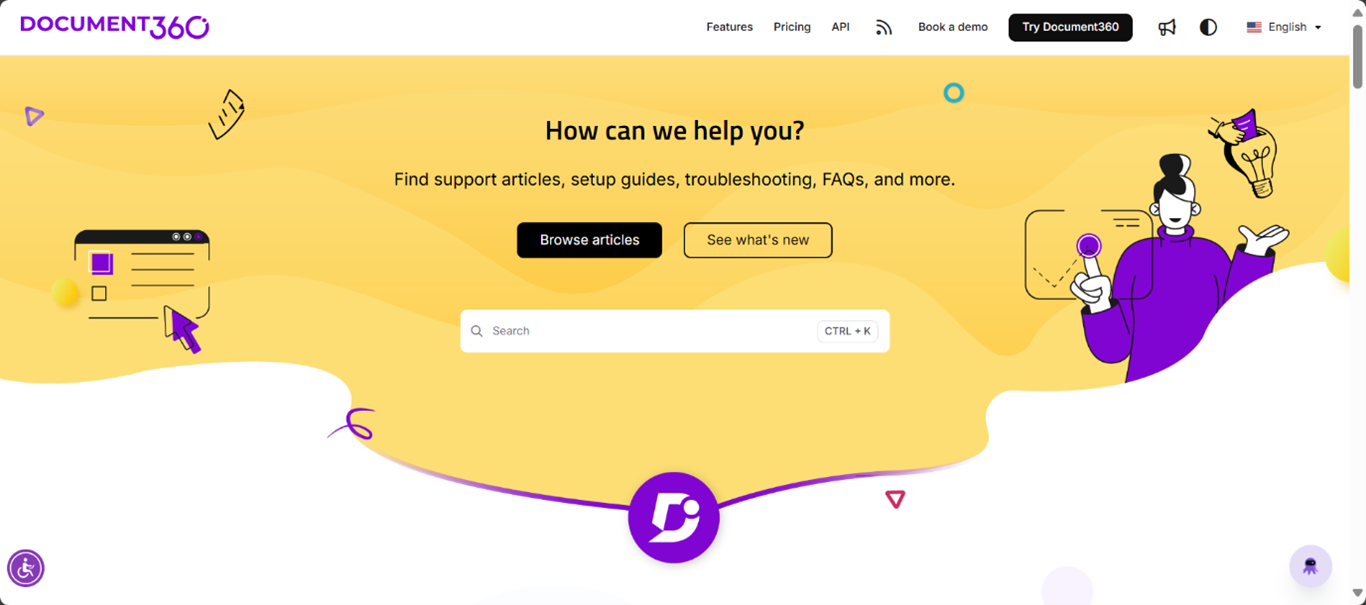
If you’re looking for a dedicated, enterprise-grade knowledge base solution that goes far beyond what HubSpot offers, Document360 stands out as the leading alternative. While HubSpot’s knowledge base is an add-on feature within its Service Hub, Document360 is a purpose-built platform designed exclusively to help teams create, organize, and scale both internal and external knowledge. It is a highly intuitive platform that is dynamic enough to address business challenges across small to mid-sized businesses and languages.
Let us look at some of its powerful features:
Content creation and organization: Document360 is an AI-powered documentation suite handcrafted for writers and reviewers. With its easy-to-use editors and AI writing agent, you can create anything with multiple content formats, from support articles to SOPs.
You can also divide the content into categories and subcategories, creating seamless documentation workflows that make internal knowledge quickly accessible for use.
Rich Editor Experience: Offers both a Markdown editor for technical teams and a WYSIWYG editor for non-technical contributors
Integration and Collaboration: It integrates with the most popular business tools, providing seamless access to your knowledge base while working on your customer service support tool, chat, code repository tools, and others.
This enables information to flow across your ecosystem, and your teams can collaborate by leveraging that knowledge in every conversation, workflow, and decision-making moment.
Access control: Document360 allows you to manage article-level access for internal documentation, so you can grant or deny access to specific articles even if the user has access to the entire category.
This granular level control gives your data and sensitive information maximum security while enhancing the team experience.
Analytics: Regularly updating your knowledge base content is one of the key steps in keeping it optimized for your teams, and great analytics allows you to do it best.
Document360 comes with in-depth analytics, such as reader activity in projects and feedback analytics. You can:
- Track who is accessing documentation
- Detect knowledge silos, and
- Spot recurring pain points highlighted by readers to fix content gaps faster
Enterprise-Grade Security: ISO 27001 certified with SSO, IP restriction, and custom roles, ensuring compliance and security at every level.
Users’ opinions about Document360
The platform is pretty powerful at streamlining content operations without being too complex. We were looking for a platform that would allow content reuse, integrate with multiple SAAS systems, and do that with an easy-to-use user interface. For us, it was also important that you didn’t have to be a technical writing wizard to understand content reuse, metadata, and dependencies. The migration process from our existing content was smooth, and the Document360 team supported us along the way and made any changes to the styling that we wanted. The Document360 platform is developing and changing quite fast, and the team is very active in addressing pain points and customer feedback to improve the functionalities.
Source: G2
Go beyond HubSpot’s limitations — explore Document360, the purpose-built knowledge base for growing teams.
Try a Demo
Zendesk
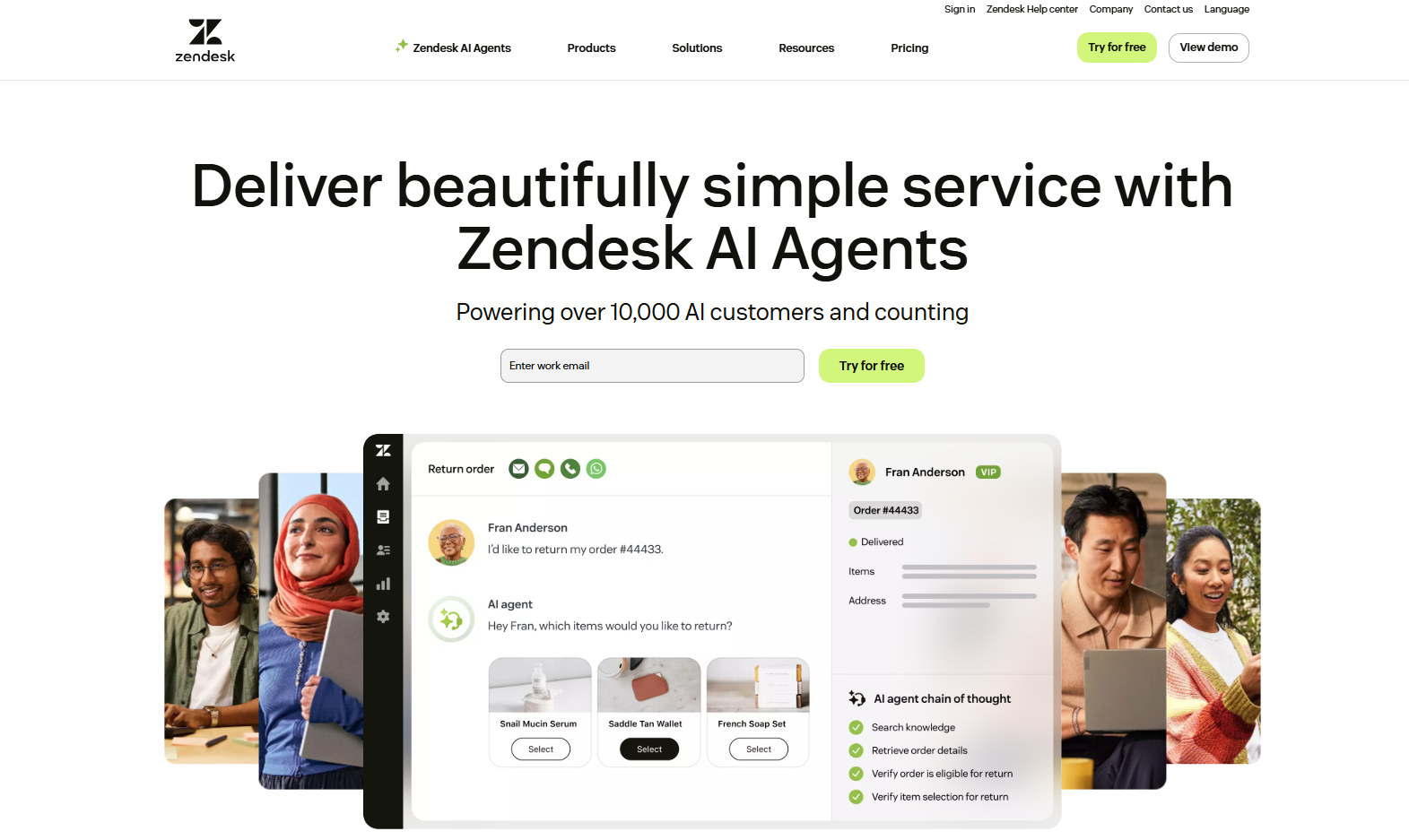
Zendesk is a robust knowledge base platform with employee self-service options that come as part of its service desk software.
With its generative AI, teams can generate a library of help articles and other company documentation. Content blocks help keep the information consistent, as any changes in them are published across every page the block is linked to.
Zendesk’s AI also gives article recommendations to customer queries, which can be used by HR and IT teams to drive quicker resolution to support tickets. They can also collaborate remotely on article creation, including with subject matter experts, ensuring information accuracy and refinement.
Teams can manage viewing, editing, and publishing permissions, ensuring users have access to relevant knowledge without compromising data.
Users’ opinions about Zendesk
Zendesk was straightforward to set up, thanks to its comprehensive library of online resources and outstanding customer support. As a small nonprofit, we required a system that was robust, affordable, and simple to implement. Zendesk surpassed our expectations on all fronts. The addition of AI tools is an extra benefit. Overall, Zendesk has truly changed the way we engage with the public and our partners
Source: G2
Help scout
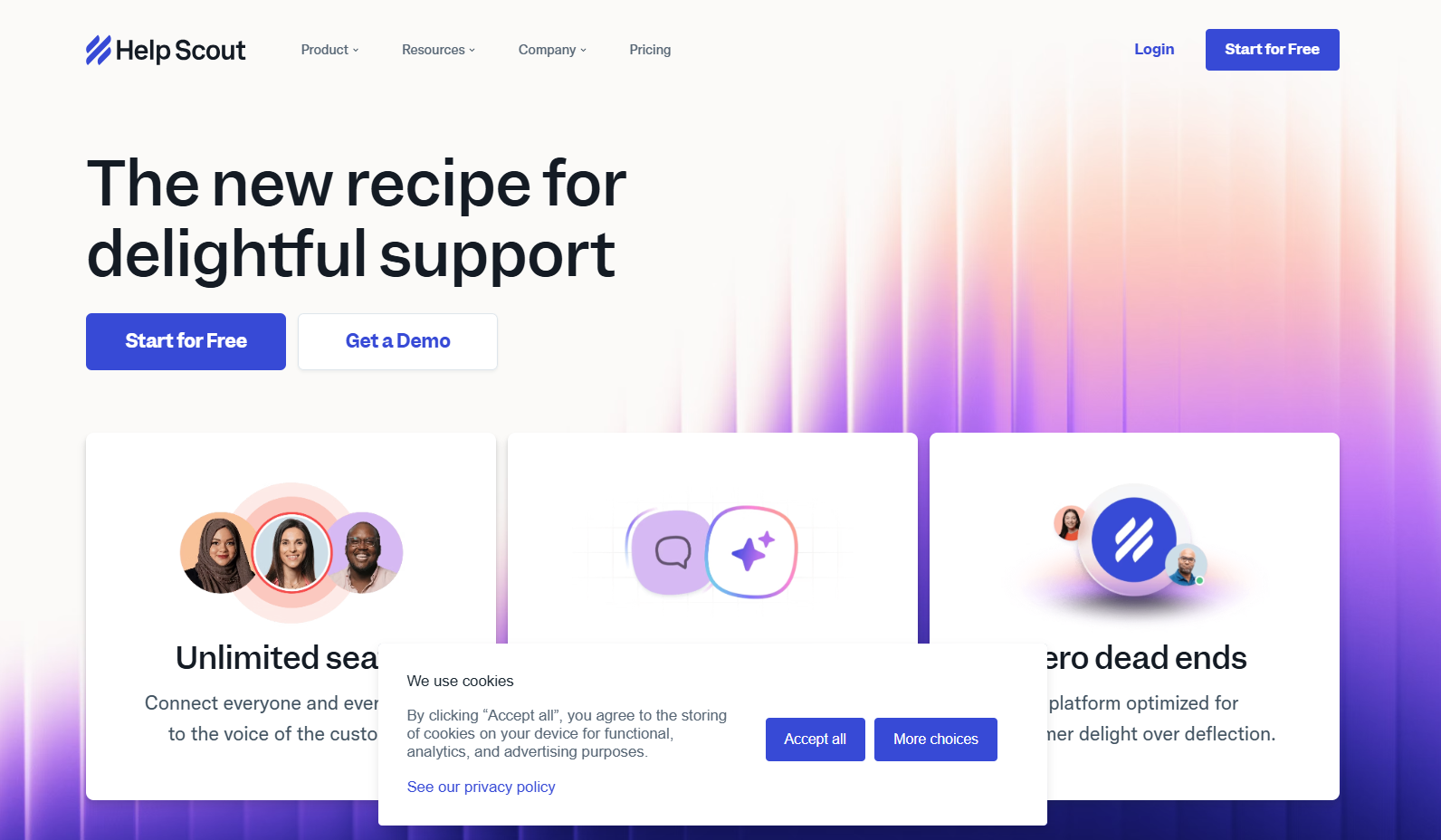
Help Scout is an affordable customer support platform that includes both help desk and knowledge base tools. Its knowledge base builder lets you create a customized help center easily within minutes, where you can store all customer-facing, comprehensive information, including FAQs.
For access control, you can use its API to connect to your team database of choice. Only people logged into the Help Scout account can view private collections in your help center or within search results.
Its smart search assistant AI can help customers get answers quickly and provide specific answers to team queries, thereby reducing repetitive work for your team.
With Help Scout’s analytics, you can also gain performance insights into your team’s interaction with the knowledge base, as well as how it is impacting your team’s speed and productivity.
Users’ opinions about Help Scout
I like how simple it is to use to create help docs. Sometimes I wish it had more advanced functionality in the HelpDocs module, like team collaboration in edit mode, article filtering to search, and the ability to download a list of all articles, for example
Source: G2
Zoho Learn
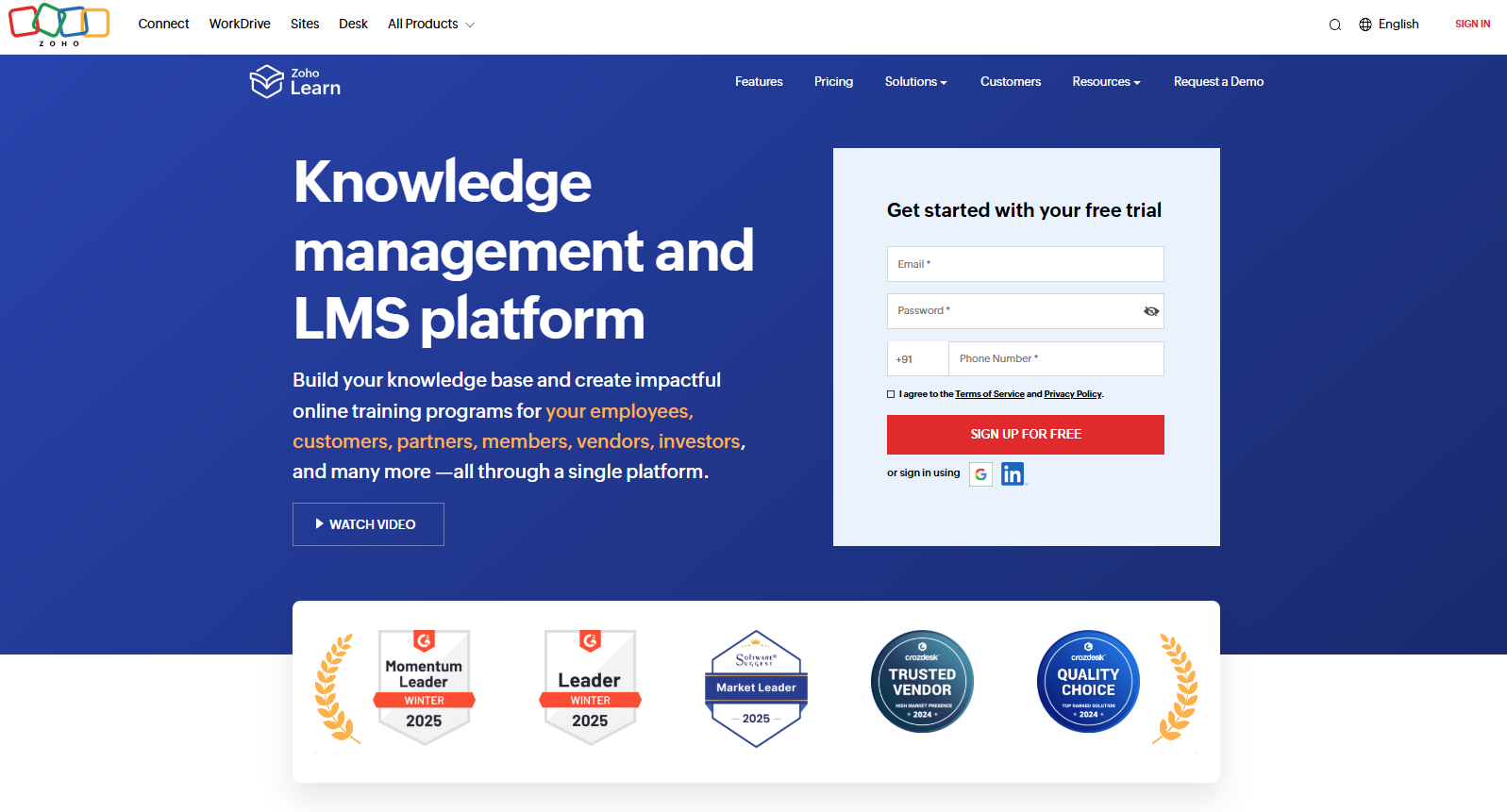
Zoho offers ‘Zoho Learn’ as an internal knowledge base tool as part of its suite of over 55 business apps.
With its collaborative editor, your team can create appealing content with rich formatting options. You can also keep track of the changes in your content and restore to a previous version anytime.
You can group articles into Manuals and further categorize them into Chapters inside a Manual. Combined with a powerful search tool, this hierarchy empowers employees to find solutions to their problems in a couple of clicks.
You can establish manual permissions for specific requirements and security purposes, while the activity timeline and built-in notifications ensure every employee stays on the same page. It also has social knowledge-sharing capabilities that help employees educate each other by having discussions using comments and replies.
Users’ opinions about Zoho
Zoho Learn offers a platform with great potential for training and knowledge management within the company. Its integration with other Zoho applications facilitates centralizing information and improving collaboration between teams.
Source: G2
Freshdesk
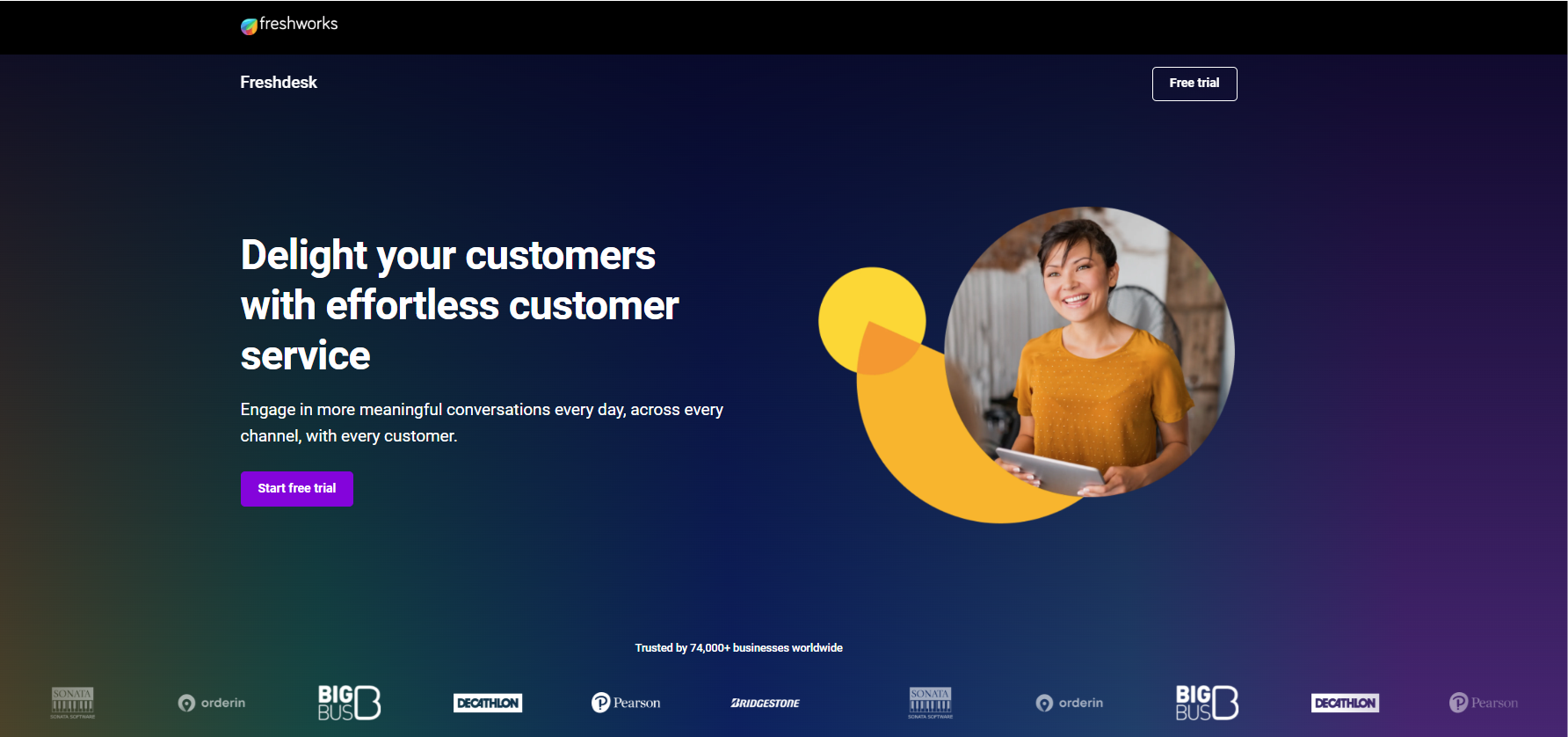
Freshdesk knowledge base is a part of its help desk software, allowing support agents to manage customer queries, self-service content, and solution article analysis in one place.
You can use it to build a centralized, multilingual repository for your support articles that can help you increase self-service rates. It helps you create branded portals that are highly customized.
However, as it is not primarily built to be a knowledge base, its search feature is not as good as the options given above. It is not specifically designed for documentation, and the teams cannot collaborate on its basic plan.
This is also why it is always reviewed as a helpdesk software, and not a knowledge base platform.
Users’ opinions about Freshdesk
The clean and intuitive interface is what I appreciate most. Even new team members can quickly pick it up, and the automation options save us hours every week. Freshdesk also keeps everything in one place — tickets, knowledge base, and reporting — so we don’t have to jump between tools.
Source: G2
How to Choose the Right Internal Knowledge Base Software for Your Team
Throughout the discussion about the best HubSpot knowledge base alternatives, some features stand out as an integral part of a good internal knowledge base. These are:
- Collaboration
- Access control
- Content organization
- Integrations, and
- Analytics
So, while these are the features you must look for to make a great internal knowledge base in general, you must consider your business-specific needs to make the right choice.
- Do you need to create very technical and product documentation?
- Are you looking for a more collaboration-heavy software with features like commenting and 360-degree sharing?
- Are you trying to streamline your onboarding as the primary use case?
- Or maybe a mix of all the above and more.
Look at the options based on your needs, and you will find the right match for your business.
Conclusion
Let’s quickly take a look at all the tools that we explored as the best HubSpot knowledge base alternatives:
Selecting the right knowledge base platform is about enabling your teams to create, organize, and access information smoothly. While HubSpot makes a strong case as an external knowledge base, many other tools offer better functionalities for an internal knowledge base.
While you must consider your business-specific needs before making the right choice, Document360 does stand out as one of the most comprehensive knowledge bases.
With its AI-powered authoring tools and editors, enterprise-grade security, and deep analytics, Document360 offers everything a business needs in a knowledge base to streamline information sharing and collaboration. It enables you to build customer-facing and internal knowledge hubs, providing scalability and control.
If your goal is to build a centralized, future-ready, and robust knowledge base that truly supports your organization’s growth, consider your specific requirements and thoroughly research the tools you are considering, and you will find the right fit.
We have limited the scope of the Document360 tool here. Update.





 –
– 

